

Table of Contents
Page 1: Introduction
With conservative estimates claiming over 5,000 games available for Japanese computers, there is no way we can cover even a fraction of those likely to be good. The following games represent some of those we've found and enjoyed. Undoubtedly there are more waiting to be discovered. CLICK THE THUMBNAILS for larger versions of the screens. Thanks to HG101 and Tokugawa followers for contributing additional reviews and screens.
Many thanks to Ben, Danjuro, Peter and everyone else at the Tokugawa forums for providing so much expert help, photos and more information than we could ever print. Also, thanks to www.NFGgames.com and www.pc98.org and for use of images. Thanks also to those on the forums at HG101, SelectButton, NTSC-uk, and anywhere else I've forgotten.
Page 2: Hardware
Page 3: Software
Page 4: Recommended games (this page)
Some games worth checking out
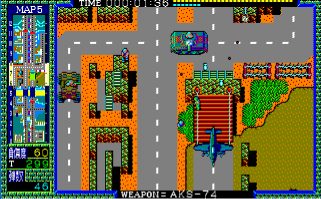
Battle Gorilla
Platforms: PC-8801, X1
By: Xtalsoft (1988)
Of all the games listed this is the most difficult to learn, but also the most rewarding due to its uniqueness (and that rockin' music). Imagine a roguelike-styled, tactical version of Commando where bullets and enemies only move when you do – there's nothing else quite like it. Using Numkeys, Space and Esc at the menu: 1) choose map, 2) stats, 3) free mode, 4) buy weapons, 5) check weapons, 6) start. During the game Space accesses the inventory and Shift shoots.
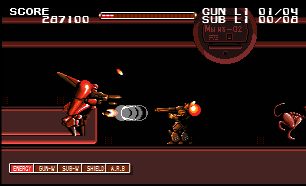
Night Slave
Platform: PC-9801
By: Melody (1996)
What could be better than an action-packed clone of Assault Suits Valken crossed with the weapons system of Gradius plus (optional) scenes of graphic lesbian bondage? Not much, we'd wager. Although not the smoothest of games, Night Slave's intense diversity makes it shine, with your mecha rampaging through rainy jungles, snowy wastes, alien bases (pictured) and more. The armaments system, with recoil physics, also has you permanently levelling up your various main- and sub-weapons in an RPG-like fashion using power-orbs.
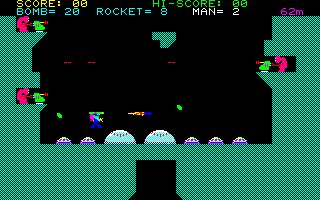
Kagirinaki Tatakai
Platform: X1
By: Hiroshi Ishikawa/Enix (1983)
With non-mirrored, separately drawn sprites for the left-and-right walking animations, a diverse range of interesting enemies, fully destructible environments, a convincing physics engine, plus a for-the-time plethora of weapons, this could be the most revolutionary forgotten gem of its time. While carrying three weapons or more has been done by most games since (except Halo), and plenty have had destructible environments (except Halo), you must remember this was released in 1983 on cassette tape. Still, miles better than Halo.
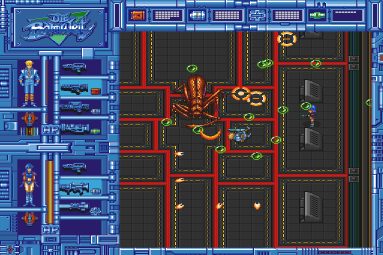
Die Bahnwelt
Platform: X68000
By: Glodia (1992 - now freeware)
Despite predating it by a year, this feels like a Japanese version of Chaos Engine. Anime cut-scenes, bizarre sci-fi plot (which is fan-translated!), plus different sidekicks with good AI whom you can chat with or order to adopt various tactics (conserve ammo, cover me, etc). As you wander the post-apocalyptic ruins there are plenty of weapons to collect, and they can be changed in real-time. Find items and maps, unlock doors and stockpile ammo. Just don't forget to share with your partner. It was at one time made freeware, but the original developer's site carrying it seems to have dissapeared.
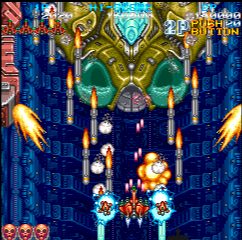
Tatsujin-Oh
Platform: FM Towns
By: Toaplan (1993)
Also known as Truxton 2, this was the only home version of Toaplan's frenetic arcade shooter, ported by Ving. With relentless waves of enemies, screenshots can never convey how intense things are. It's fast, very colourful, and makes good use of the system's capabilities. A simple power-up system, plus super bombs, keep everything intuitive despite the high difficulty. Regarded by many as the system's best shooter, better even than the system-exclusive Rayxanber.
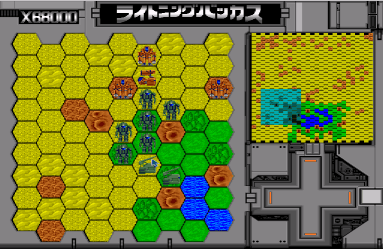
Lightning Bacchus
Platforms: PC-9801, MSX2, X68000
By: NCS/Masaya (1989)
A mecha strategy game developed by NCS/Masaya for the PC98, MSX, and X68000 systems. Although a different genre, in some ways it's a precursor to the later Assault Suit series made by the same company. A short but sweet game where you wage war on an alien planet. Recommended for those who enjoy high difficulty levels. The X68000 version features the best music and graphics of the different versions; and features mouse control. (Gargatar of Tokugawa)

Mirrors
Platforms: PC-8801, FM Towns
By: Soft Studio Wing (1990)
This may be Soft Studio Wing's finest moment. Mirrors stars David, singer in famous rock band Elleno Vision, who is haunted by nightmares in which he is chased and killed. After waking from one of these nightmares he discovers that the band's manager has been murdered. The game's strongest point is its atmosphere, created by great CD music, eerie photo-like graphics, and a fascinating story. Mirrors has multiple endings (the PC88 version has an extra one over the FM Towns port). Sadly PC88 CD emulation is tricky and requires ASPI driver installation. (Snake Plissken of Tokugawa)
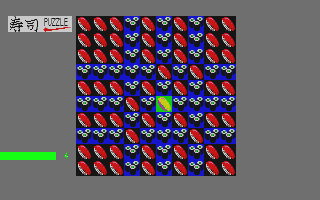
100 YEN DISK
Platform: PC-8801
By: Alphax/Onion Software (1986-1990)
A 7-part compilation series for the PC-8801, spanning 5 years. Many curiosities and gems could be found on each disk, which include a cockroach-swatting game, a few sushi puzzles, an "electric" novel, and even a game about cattle mutilations. Your opinins may vary though, as almost half of the games are too primitive for today's age. But for the other half, it should be fairly interesting. Also, it features Samus from NES Metroid on the menu screen! (noname345 of Tokugawa)
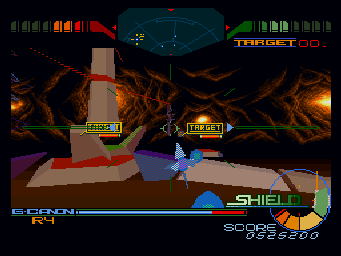
Geograph Seal
Platform: X68000
By: Exact (1994)
Interesting from both a historical standpoint, and as a great game in it's own right. It's made by Exact, the makers Aquales and also the PlayStation Jumping Flash games, and almost seems like a protoype for Jumping Flash, with the same super high double jump, similar player mech and weapons, and even some of the same fonts. The biggest difference is that Geograph Seal has a greater emphasis on shooting than its platforming descendants. It's probably my favourite game on the X68000, not counting arcade ports. (Loki Laufeyson of Lunatic Obscurity)
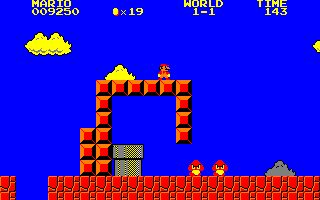
Super Mario Bros Special
Platforms: PC-8801, X1
By: Hudson (1986)
Super Mario Bros Special by Hudson is not a port of the NES classic by Nintendo - it's a wholly new, surreal, sadistic and slightly insane remix. This is even weirder than SMB: The Lost Levels in terms of turning a formula on its head. Considering that the game would have been targeted at those wanting a similar experience to their console-owning friends, it's baffling as to why Hudson's staff seemed to attempt the job while on LSD. As it stands, SMB Special is now a captivating gem for retro enthusiasts, since it subverts everything expected from SMB's design. The screen doesn't scroll, turtle shells bounce back, pipes lead to nowhere, coin blocks exist in infuriating places, and some levels are impossible to finish without completing esoteric elevator puzzles (world 4-3).
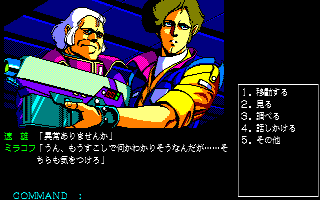
JESUS
Platforms: PC-8801, FM-7, MSX2, X1, Famicom
By: Enix (1987)
In the year 2061 a group of researchers from the space station JESUS are sent on a special mission to investigate Halley's Comet, but it all goes awry when one of the space ships loses communication. Hayao Musou is given the task to find out what happened. This sci-fi adventure by Enix is often praised for its movie-like story, although it's obviously influenced by the Alien films. Gameplay is all menu selection, but it does have a good mix of puzzle and exploration – and an element of horror too. Koichi Sugiyama composed the music, with the theme song being most memorable. A very enjoyable game, and not to be missed by Japanese adventure enthusiasts. Whilst not nearly as good, the sequel JESUS II is worth checking out. (Trickless of Tokugawa)
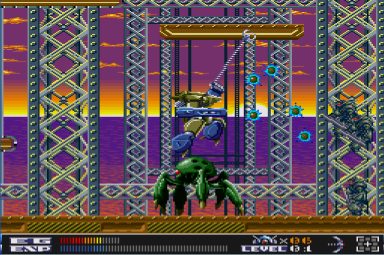
Aquales
Platform: X68000
By: Exact (1991)
Playing like a cross between Assault Suits Valken and Bionic Commanda, Aquales is an incredibly awesome side-scrolling action game with multiple layers of parallax scrolling and a thumping heavy metal soundtrack. Levels are wildly diverse, including an ocean platform at sunset, an underwater ship with transparency effects, a Grecian coliseum and a futuristic speeding train. Each has multiple weapons to be found within, one of which spits antigravity flames that speed along walls and ceilings! There's also swords and chainguns. For a full examination click the title above.
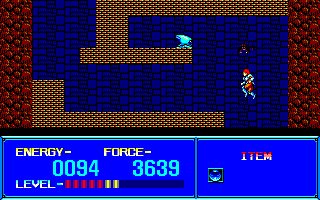
The Scheme
Platform: PC-8801
By: Bothtec (1988)
The Scheme is a side-scrolling action-RPG vaguely similar to Castlevania II: Simon's Quest and Metroid. Although divided into chapters, the structure isn't totally linear - the goal in each stage is to explore until you find the boss and kill it, which will give you an item to open up the next stage. It gets extremely complicated, with huge maze-like dungeons, and even the progression isn't completely linear, as you can often times find yourself stumbling into areas where you're severely underpowered. The game apparently has more than 500 screens, so there's a whole lot of gound to cover. It also features music by Yuzo Koshiro, so is essential for both music and Metroidvania fans.
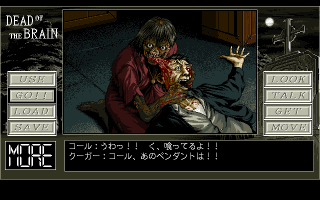
Dead of the Brain - Shiryou no Sakebi
デッド・オブ・ザ・ブレイン - 死霊の叫び
Platforms: PC-9801, MSX2, X68000, FM Towns, PC Engine CD
By: Fairy Tale (1992)
One night Dr Cooger invites his friend Cole over to his house to show off his new creation - a revival medicine that can bring the dead back to life. The Doctor uses the fluid to revive a recently deceased policeman, but ends up turning him into a raging zombie. The nightmare truly begins when the Doctor accidently spills the fluid in a cemetery during their escape. The first of Fairy Tale's Nightmare Collection series, it's packed with suspense and gore. There are also some scenarios where failure to pick the right action within the time limit results in death. Re-released for the PCE-CD as part of DotB 1&2 (1999). Other games in the Nightmare Collection are Marine Philt and Dead of the Brain 2. (Trickless of Tokugawa)
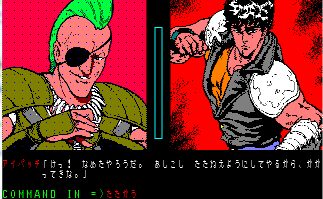
Hokuto no Ken: Violence Gekiga Adventure
北斗の拳 バイオレンス劇画アドベンチャー
Platforms: PC-8801, FM-7, PC-9801, X1
By: Enix (May 1986)
Predating the Sega Mark III version of Hokuto no Ken (aka: Fist of the North Star) by a few months, this little known graphic adventure by Enix was the series' true game debut. It follows Kenshiro and his companion Bat as they travel the post-apocalyptic wasteland searching for Ken's old nemesis Shin, who holds his beloved Yuria captive; events in-game do not resemble Tetsuo Hara's manga beyond the appearance of Shin and his four card-themed lackeys. In order to progress, players must investigate each scene to open new options. The sole unique feature is the battles, which allow players to choose which vital points to strike. Each enemy is vulnerable to a specific set, and to figure these out players must uncover clues or talk to villagers. (johnny2x4 of HG101)
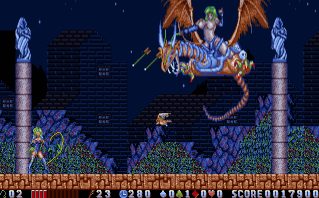
Rusty
Platform: PC-9801
By: C-Lab (1993)
When first investigating the daunting world of Japanese computers, there's an urge to go with what's familiar - for some people this foolishly means only looking at cross-system ports. Thankfully Rusty, being a Castlevania clone, is both familiar and an original system exclusive. Taking control of the eponymous kinky girl in the dominatrix outfit, you whip and swimg your way Belmont-style through a variety of gothic levels filled with demonic enemies, battling semi-nude bosses. Although difficult, later levels are particularly gorgeous using the PC98's 16 colour pallette. Essential for Castlevania fans.
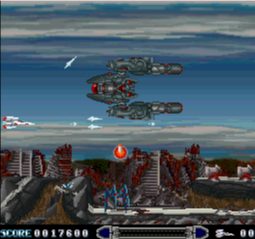
Rayxanber
Platform: FM Towns
By: Data West (1990)
Anyone who played Rayxanber II and III on the PC-Engine CD-ROM (aka Turbo Duo) should remember them as awesome hori shmups with fantastic music extremely detailed sprite graphics (especially the 3rd). Most probably aren't aware that the first title was actually an FM Towns exclusive. Unfortunately while most places on the internet speak positively of it (despite having never played it), Rayxanber is actually rather poor and the weakest in the series. You collect elemental weapons and can dash out of trouble like later games, but the visuals and sound aren't as good, and the action dull. Plus later levels get infuriatingly difficult. Still, as a curio and origin of an otherwise awesome niche series, it's worth tracking down.
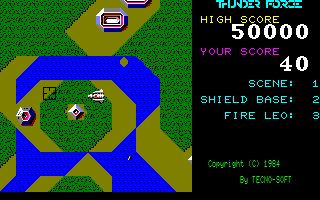
Thunder Force
Platforms: Many, including the X1, PC-8801, and FM-7
By: Tecno Soft (1984)
Much like Rayxanber, we're covering this shmup not because it's any good, but because it was the start of an otherwise awesome series. The original Thunder Force isn't side-scrolling like later installments, but rather free-directional scrolling overhead stages where you fight airborne enemies and bomb ground targets in search of hidden shield generators. It's kinda of like a free-roaming Xevious. Once all the shield generators are found and destroyed, the game shifts to a screen where you have to destroy a portion of a large fortress named the Dyradeizer. Then repeat. The PC88 version is probably the worst of all the ports, so play the X1 game.

Hover Attack
Platforms: PC-8801, X1
By: Compac (1983)
Yaiman, one of the directors at Treasure, revealed that Bangai-O was originally intended to be a remake of Hover Attack. Your goal is to maneuver your mobile base from one side of the level to the other. Similar to Bangai-O, you can fire independently of the direction moving. Unfortunately you have both limited ammo and thrusting fuel, so you regularly need to refuel at base. The missile trails left by all projectiles were another major aspect taken for Bangai-O, and certainly look impressive. It's a difficult game to play because movement is choppy and it's too easy to get overwhelmed by enemy fire, but it's cool to see the game that inspired Treasure's masterpiece.
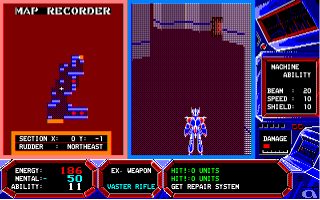
WiBArm
Platforms: PC-8801, X1, FM-7
By: Arsys Software (1986)
Technically not exclusive to Japanese computers since it was ported to IBM-compatible MS-DOS for western audiences by Broderbund, this is such an awesome game I felt it deserved inclusion. Taking control of a transformable robot, able to shift into walking mode, a tank and a flying jet, WiBArm has you exploring areas in a side-scrolling action view, and also a 3rd person fully 3D view inside buildings. Bosses meanwhile switch to an arena-style 2D battle. Along with a variety of weapons and equipment, you can earn experience to raise stats, giving it a mild RPG flavour. The fact it now seems ignored is a travesty.
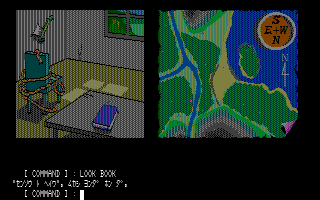
The Death Trap
Platforms: PC-8801, PC-9801, FM-7
By: Square (1984)
The Death Trap is an average adventure game, but with an interesting feature. Basically, there are different routes you could take in some parts of the game, and it adds a few points to the replay value. Unfortunately, none of the routes affect the game in any major way. Even more interestingly, this would appear have been Square's first game. (By noname345 of Tokugawa)
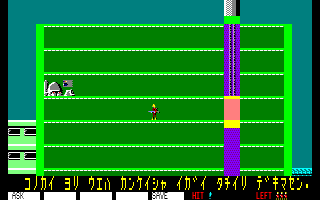
Brain Breaker
Platform: X1
By: Hiroshi Ishikawa (1985)
This is a really special system exclusive. Made by the same H Ishikawa behind Kagirinaki Tatakai, Brain Breaker places you on a mysterious planet where all inhabitants have seemingly been killed by hostile androids. As a sprawling and free-roaming 2D adventure, you need to find working weapons, a functioning jetpack (there's a broken one early on), plus keycards which allow elevator and building access. Once beyond security you can start destroying the AI computers and finding a way off the planet. There was nothing quite like it in 1985, while the scope and size of everything is still awe-inducing.
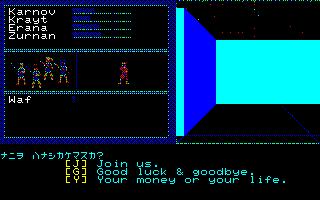
The Black Onyx
Platforms: Many, including the PC-6001, PC-8801, FM-7, and MSX
By: Henk Rogers (1984)
Generally considered to be the first Japanese RPG, alongside Falcom's Dragon Slayer and Koei's ‘Dungeon'. Released in 1984, it predates both The Bard's Tale and Wizardry's release in Japan. It was created by Henk Rogers, a Nederlander turned Japanese game developer. You start out in the city, Utsuro, create your characters (up to five), equip them, and delve into the dungeons beneath the city in search of the Black Onyx. There is no magic and no ranged weapons, it's just your characters and a dungeon filled with enemies. One unique feature is conversation. If your party isn't full, you can speak to random townspeople you encounter and recruit them. The game was the top seller in Japan for roughly two years, and has now been translated. (lordkarnov42 of HG101)
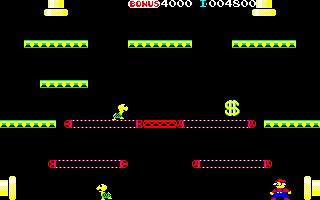
Mario Bros Special
Platforms: MZ-1500, PC-6001, PC-6601, PC-9801
By: Hudson (1984)
Let's be honest: the original Mario Bros, with the turtles and the POW block, was fairly crap to play and very repetitive. This though is an ingenious rethinking of the game, not by Nintendo but instead by Hudson - and it's so good, that really this is how Nintendo should have made it. Although only 4 levels long, each is diverse and a ridiculous amount of fun. Jump between moving platforms to reach the top; bounce turtles off a series of trampolines; traverse conveyors and moving platforms to collect a ring, and finally grab as much cash as you can! More info here.
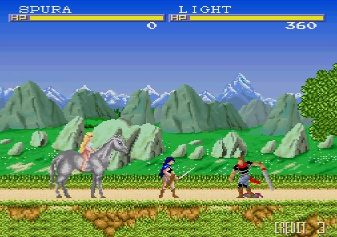
Gardis Light
Platform: X68000
By: Sprite
A pretty cool platform beat em up, with slightly Amiga-esque graphics. It's a lot of fun, but it has two problems: the first stage tricks you into thinking it has a much cooler gimmick, and the fact that some of the music is stolen from Golden Axe. (Loki Laufeyson of Lunatic Obscurity / Image by Kimimi of HG101)
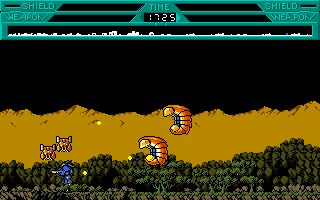
DAIVA - Active Simulation War
Platforms: PC-8801, FM-77, X1, MSX, MSX2, Famicom, PC-9801
By: T&E Soft (1986-1988)
Could there be a game more complex than the epic space opera DAIVA? Very few people, in Japan or otherwise, are likely to have played all 7 chapters in the series, since each was released on one of 7 different platforms. The series is not a collection of sequential stories, but rather a presentation of the same story from seven different perspectives. Basically you're given a galactic space map and have to make use of planetary resources to build more ships and weapons, which can then be deployed in fleet battles. You also need to manage the morale of those on the planet by enacting various policies concerned with things like the defence budget and the environment. When entering enemy territory DAIVA switches to a side-scrolling action ala Assault Suits Valken. Chapter 2, MEMORY IN DURGA, is the best looking since it makes full use of the FM77 colour pallette, with almost SNES-quality visuals (pictured left).
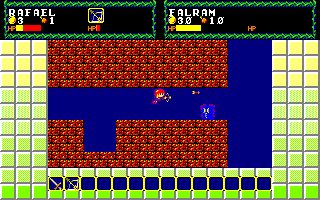
Euphory
Platform: X1
By: System Sacom
As an X1 system exclusive Euphory isn't the most original game we've come across, but if you loved Legacy of the Wizard, Wonderboy: Dragon's Curse and Zelda II, then you should feel right at home with this Metroidvania-style action RPG. This must also be the only example in the genre we've come across that simultaneously supports 2-players! Move with the numekey arrows, jump with SPACE or Z button and attack with X after equipping a weapon (TAB accesses your inventory). My advice is ignore the sword from the early salesman, and instead buy the bow, which has infinite arrows! Also, there are numerous underwater caverns and swimming takes some getting used to - but persevere!
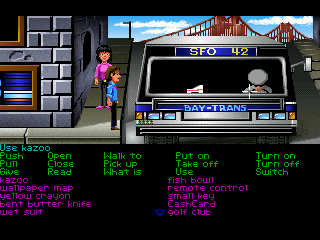
Zak McKraken and the Alien Mindbenders
Platform: FM Towns
By: Lucasfilm Games
As mentioned, the FM Towns had a lot of Western games which weren't released elsewhere. Although classic PC adventure Zak McKracken was released on several formats, the FM Towns port was the best, and is exclusive to Japan. Released on CD it had completely redrawn graphics (using 256 colors) and also featured redbook audio music. Although exclusive to Japan, the CD includes both English and Japanese language modes. Strangely, when the game is set to Japanese mode, the main character sprites have larger eyes, giving them a more manga-esque look to match the redesigned characters in the cover and manual artwork.
SPECIAL THANKS